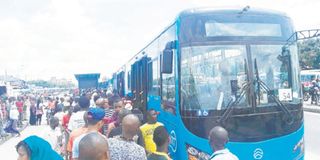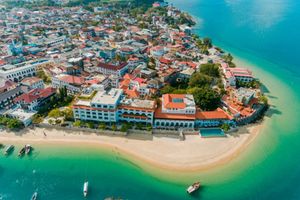Udart boss: Rethink revenues model

What you need to know:
- With a myriad challenges the Bus Rapid Transit (BRT) grapples with, the new boss wants Tanzania to rethink its financial model of running the buses.
Dar es Salaam. The new Chief Executive Officer of Usafiri Dar es Salaam Rapid Transit (Udart), Mr Amos Gillert, has hit the ground running.
With a myriad challenges the Bus Rapid Transit (BRT) grapples with, the new boss wants Tanzania to rethink its financial model of running the buses.
Even as the BRT came to the rescue of the ever rising demands of public transport in the over five million-dweller commercial city, the BRT services have yet to live up to expectation.
In an exclusive interview with The Citizen last week, Mr Gillert said one of the challenges facing Udart is how to practise the current revenue model.
He said the model binds the operator to finance all the necessary running costs and pay the regulator agreed access fees.
According to Mr Gillert, they are bound to pay a daily access fee of Sh8.1 million.
This implies that apart from other running and maintenance costs, Udart pays Sh56.7 million a week or Sh2.9 billion annually.
Mr Gillert, who was picked by the government from Israel in December last year as the BRT manager and Udart boss, disclosed that the aforesaid amount was not tax inclusive.
The Udart boss, however, fell short of providing exact data, explaining that he was busy supervising technicians, who were fixing problems of the broken down buses.
“Under the existing revenues model, there is a great challenge of sustaining business. It is difficult to meet additional costs caused by frequent floods that lead the infrastructure and buses damaged,” he said.
“With time, I think there is a need for the government coming up with a financial model that will be conducive for the BRT services to run profitably,” said the CEO.
Mr Gillert, who has wide international experience in running BRT projects, said the BRT financial model worldwide takes three forms, including the revenue model, subsidy approach and a blend of the two models.
“I know that the subsidy model cannot be practised here because it needs big economic muscles. Strong economies normally practise the subsidy model while weak economies rely on the revenue model,” he said.
Regarding the greatest challenge facing the current operator, he said low capacity of meeting the demand of the public was one of them, but added that frequent floods have caused a loss of 30 per cent of the total revenue. According to a recent Udart report, adult passengers pay Sh650 per trip, while students pay Sh200 a trip. The report also shows that a total of 180,000 adults and 20,000 pupils use the service daily, which means Udart generates a gross revenue of at least Sh121 million a day.
This implies that during floods 30 per cent of Sh121 million, which is Sh36.3 million goes down the drain.
According to him, there was a need to initiate a national dialogue for discussing the right revenue collection model with all major stakeholders. Besides, he said they were struggling to find ways for recouping the lost revenue in order to sustain the services in the city.
“This is just normal under any BRT project. With time all the challenges can be resolved to pave way for growth of services and businesses,” he says.
Explaining about his experiences in Israel where he worked under phase one and two of BRT, he said similar challenges of capacity and irregularity in terms of number of trips and buses were noticeable.
Nonetheless, he harboured hope that the future of the BRT services in the country was bright.
Meanwhile, the Udart boss said that they were well prepared to run jointly with the envisaged new operator who will be brought on board at the beginning of next year.
Recently, the public relations manager of Dart, Dr William Gatambi, said that the interim phase is set to end in December.
According to him, the first phase started in 2016 with a view to preventing the BRT infrastructure from destruction.
Currently, Udart has a total of 140 buses, which includes 101 small buses and 39 trunk buses that ply routes from the city centre to Kimara, Morocco and Gerezani to Kimara, and Morocco routes.
To operate efficiently, BRT currently needs 305 trunk buses with capacity to transport at least 500,000 passengers per day, according to Dart.
The trunk buses shortage has left a lot of Dar es Salaam residents complaining about the services of the operator.
In a related development, Udart is set to resume selling BRT smartcards in the next three months.
Mr Gillert said that they were in marathon negotiations with possible partners for offering smartcard services so that sustainable services are available in the near future.
“We are still I talks over proper use of smartcards. Please, give three months then the problem will be settled,” said Mr Gillert.
He said that under the plan for resuming the smartcards, they expect to contact service providers with high level of efficiency and capacity.
Udart introduced smartcards system in June 18, 2016 in order to reduce queues at bus stations and maintain convenience among passengers who were scrambling for tickets.
Maxicom Africa had been providing the digital payment infrastructure.
Despite the use of the smartcards, many passengers continued to complain about long queues at ticketing centres.




